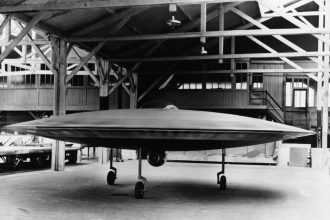AI has a branding and storytelling problem. That’s not to discount its rise in usage, discussion, possibilities. But if you ask ten people what it is you may and probably most likely will get ten different answers. That’s not a place you want to be as a marketer.
It’s not uncommon for new technology to get stuck in the weeds and either become overly technical in its storytelling or so simplistic that it doesn’t push the narrative forward. Ultimately the best and easiest stories to connect with show, rather than tell, what something does. Ironically, AI is lacking human connection. It needs easy examples of direct human impact to help tell its story. The good news is they are not hard to find.
Curing cancer is at the top of most people’s wish lists for the promises of AI. That’s why millions of scientists are increasingly working with R&D software companies like Dotmatics to become AI ready. Because the real impact has already changed the timeframe of scientific drug discovery from 10 years down to 2, or less.
It’s okay if you haven’t heard of Dotmatics yet, but its software is already used by more than 2 million scientists globally—from Bristol-Myers Squibb and Merck, to start-up biotech companies still running in incubator spaces, to research universities like MIT and Oxford. Dotmatics has an 800-person team made up of researchers, chemists, biologists and business leaders working behind the scenes to accelerate scientific discovery to create a healthier, cleaner, safer world.
Two of their leaders share what it’s like to be on the ground of a transformative era in life sciences. Melanie Nelson is a biochemist and now Director of Product Management, Solutions and Integrations at Dotmatics. She has a Ph.D. from The Scripps Research Institute and now works to build technology solutions that help streamline complicated scientific workflows.
“Dr. Nelson and I met at a dot-com era biotech company in the early 2000s, just as the first human genome data was released,” said Dr. Susan Baxter, retired biotech executive, and former executive director, California State University Biotechnology Program. “Melanie’s innate excitement for science, her outgoing nature, and her fortitude in the face of biological complexity has made her uniquely effective in bridging the gaps between business, technology and science groups to drive product development.”
Rebeca Sanchez Sarmiento joined Dotmatics two years ago as Chief Financial Officer, attracted to a mission-driven company focused on improving lives by advancing scientific innovation.
“Rebeca’s approachable style and willingness to work in a ‘sleeves-rolled-up’ environment is a good fit for a dynamic growth company like Dotmatics,” said Rick Phegley, executive vice president of Chedraui USA, an $8 billion multi-format grocery retailer with 375 stores in the western U.S. “And once those sleeves are rolled up, everyone working with her quickly learns how to work with mounds of data and generate real insights for the benefit of the business and its customers.”
Goldie Chan: Let’s start with your careers. The combination of scientific, tech and business expertise on your team must create an interesting culture mix, especially as female leaders. What advice would you both give to women pursuing STEM fields?
Melanie Nelson: Always strive to approach disagreements on your team with the same curiosity that probably drew you to STEM in the first place. Ask why different people think how they do, and keep asking follow up questions until you really understand their perspective. Be willing to adjust your opinions based on what you learn, but also be willing to speak up and explain your own way of thinking.
Rebecca Sanchez Sarmiento: Don’t limit your own possibilities. What makes a career in STEM so unique is the sheer diversity of opportunities that cross technical, operational and business oriented roles. Allow yourself the freedom to explore different avenues and shape-shift your career path over time.
Chan: Was there someone who inspired you along the way who influenced you in your career?
Nelson: My 9th grade chemistry teacher, Ms. Wood, was the first person who made me take my potential in science seriously. She convinced me to enter a project in a local science fair, and wouldn’t let me write it off as a fluke when I won second place. Based on her confidence in me, I took the more advanced chemistry class the next year and I loved it so much that I decided to major in chemistry in college.
Chan: AI is arguably the biggest buzzword these days, sometimes with excitement and sometimes with dread. Why is there so much optimism about AI in the life sciences industry?
Sarmiento: To start, let’s frame the big problem: the current drug discovery process is expensive, disconnected, time-consuming, and involves parsing through mountains of diverse data that is sitting in disparate and often disjointed systems. On average, bringing a single drug to market costs around $2.5 billion dollars and takes 10 years. And for every drug that gets approved, thousands of compounds will fail. It’s a highly complicated process that’s ripe for innovation. But now imagine if we could do things like expedite creating vaccines for newly emerged pathogens, or discover new treatments to help with chronic illnesses like Alzheimer’s or Parkinson’s. What if we could do all that not just faster, but also with far fewer side effects, higher success rates and ultimately lower costs to consumers?
Nelson: Yes, I think today there is so much optimism because we see the possibility for AI to help us do more and better science, and ultimately get to our research goals faster.
The drug discovery industry has been using computational methods to help accelerate research for decades, so we’re familiar with the idea that these methods, when used wisely, can help build insights and drive our science forward. We look at what the latest large language models (LLMs) can do and what projects like AlphaFold have been able to achieve, and we see a lot of potential to help us do things like identify better drug targets, to more efficiently explore chemical space and find promising drug leads faster, and to more effectively target drugs and reduce toxicity.
Chan: What are the possible roadblocks and challenges you see to that happening?
Nelson: First and foremost, the challenge is getting the data ready to do AI. We know scientists are dealing with larger and more complex datasets than ever before. Worldwide the amount of data doubles every two years, and each new drug creates terabytes or petabytes of data at every stage of development. So, scientists need help to extract meaningful insights from all that data. Plus, not all of that data is available to them; it’s often locked in different systems and not compatible within an organization, or it’s not structured or “clean.”
Beyond data readiness, quality and accuracy are also essential factors, and currently still hard to assess with many AI methods. While we should anticipate AI to be increasingly used in the earlier stages of drug discovery, I expect we will always need lab research and clinical trials to validate the ideas and hypotheses it provides. We also need to think hard about how to build training sets so we don’t accidentally bias results. And it’s hard to overemphasize the myriad ethical, social and privacy considerations we’re all just starting to explore as a society. Bottom line is we must find a balance to harness the power of artificial intelligence while protecting people and our planet against future harm.
Chan: So where does your company Dotmatics fit into that set of problems?
Sarmiento: We are building the most powerful scientific R&D platform in the world. It lets scientists and researchers work from a single source that connects all their favorite applications together and lets them collaborate, provides automation and performs analysis in research labs. Companies simply can’t do AI until they create the infrastructure required to get predictive. That’s why scientists are partnering with Dotmatics: to break down the silos, and apply data science to their science data.
Chan: You have millions of scientists who trust your brand – what generally sets you apart from competitors?
Nelson: Obviously, we have a deep commitment to helping scientists make the most of their data, and that has been true from the very start of our company. But what I think sets us apart is the deep and diverse scientific experience on our team, which naturally extends to the family of products we develop and offer. Science is complex and constantly changing. So to build products that scientists will love to use every day, to really empower them and make their lives easier, you need that “in the lab” experience at the heart of your team. So we’re building these solutions for scientists, by scientists.
Chan: What’s next for the company, and what gets you most excited about your job as you look ahead at the next few years?
Sarmiento: It feels like we’re on the cusp of a revolution in how life-saving drugs are brought to market, and that’s incredibly exciting. In addition to our R&D platform I mentioned earlier, Dotmatics has already developed some state-of-the-art AI approaches within our own tools in specialized fields such as flow cytometry, and we’re working directly with customers to increasingly add such AI analysis functionality to new areas to support their needs. We’re also always on the hunt for new products that will fit well within our portfolio to expand the depth and breadth of our capabilities.
There is a lot of hard work ahead. The most pressing objective is to ensure that scientists using AI now have a reliable underlying data layer, and to ensure the data used to train AI is cleaned, organized and unbiased—because we know the promise of AI is only as good as the information it learns from. I think that’s an essential lesson for all of us right now; we must approach this moment with humility, with caution and also strive to keep an open mind. If we can work together to shine a light on the concerns and implement the requisite safeguards, AI has the power to transform scientific discovery in ways that we can’t even fathom today.
Read the full article here





